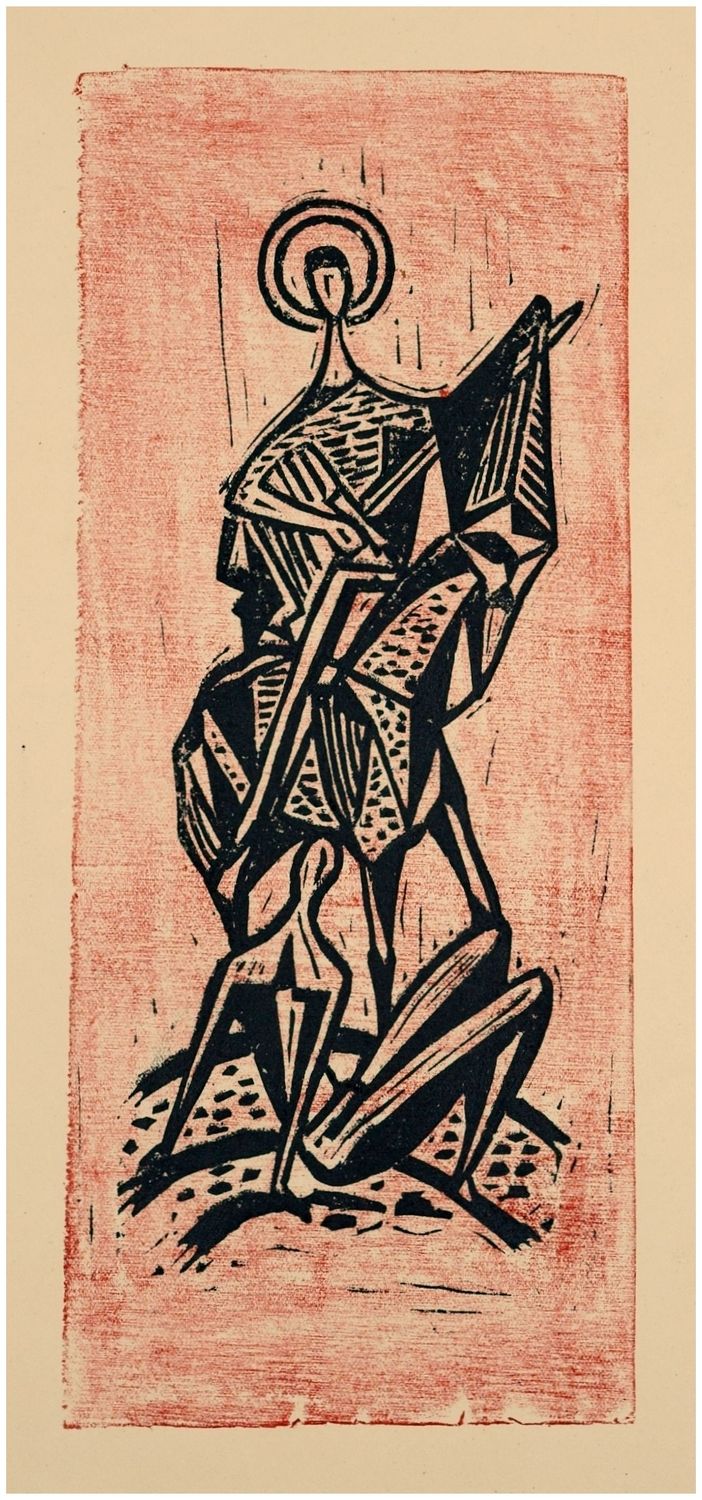Hinsch, Henry attr. (1909-1979), St. Martin, um 1960
Henry Hinsch attr. (1909 Nikolaev - 1979 Göttingen), St. Martin , um 1960. Farbholzschnitt, 33 cm x 15 cm (Darstellung), 45 cm x 27,5 cm (Blattgröße).
- Papier mit leichteren Knickspuren und am linken breiten Rand löchrig
- Das Schwert der Nächstenliebe -
In einer an Picasso orientierten kubistischen Ausführung bildet St. Martin eine figürliche Einheit mit seinem Pferd, wobei der Kopf hoch in den Himmel aufragt und mit dem Heiligenschein wie eine Sonne der Nächstenliebe wirkt. Unter ihm sitzt der Bettler, für den der Heilige seinen Mantel teilt. Auch er fügt sich in die Figuration ein, so dass der Hl. Martin und der Bettler einen Zusammenhang bilden. Durch die Krümmung des Bodens wird ein Bezug zum Erdenkreis hergestellt, über dem – nach der kriegsgeprüften Zeit – die Nächstenliebe walten soll, was zusätzlich durch das ‚warmherzige‘ Rot vermittelt wird.
zum Künstler
Henry Hinsch wuchs in Riga auf. Während der Oktoberrevolution floh die Familie 1917 nach Deutschland. In Stettin studierte er an der Akademie der Angewandten Künsten Graphik bei Vincent Weber. Auf Empfehlung des Leiters der Hamburger Kunsthalle, Gustav Pauli, erhielt der begabte Hinsch ein Stipendium an der Berliner Kunstakademie, wo er von 1937 bis 1939 bei Fritz Burmann studierte. Nach Kriegsende ließ er sich als freischaffender Künstler in Göttingen nieder. Dort gründete er gemeinsam mit Helmut Bönitz die Künstlervereinigung ‚Kreis 34‘ und engagierte sich im ‚Bund Bildender Künstler (BBK)‘. Studienreisen führten ihn nach Italien, Frankreich, Spanien, die Niederlande, Österreich und Belgien.
1979 wurde dem Maler und Bildhauer die Ehrenmedaille der Stadt verliehen.

